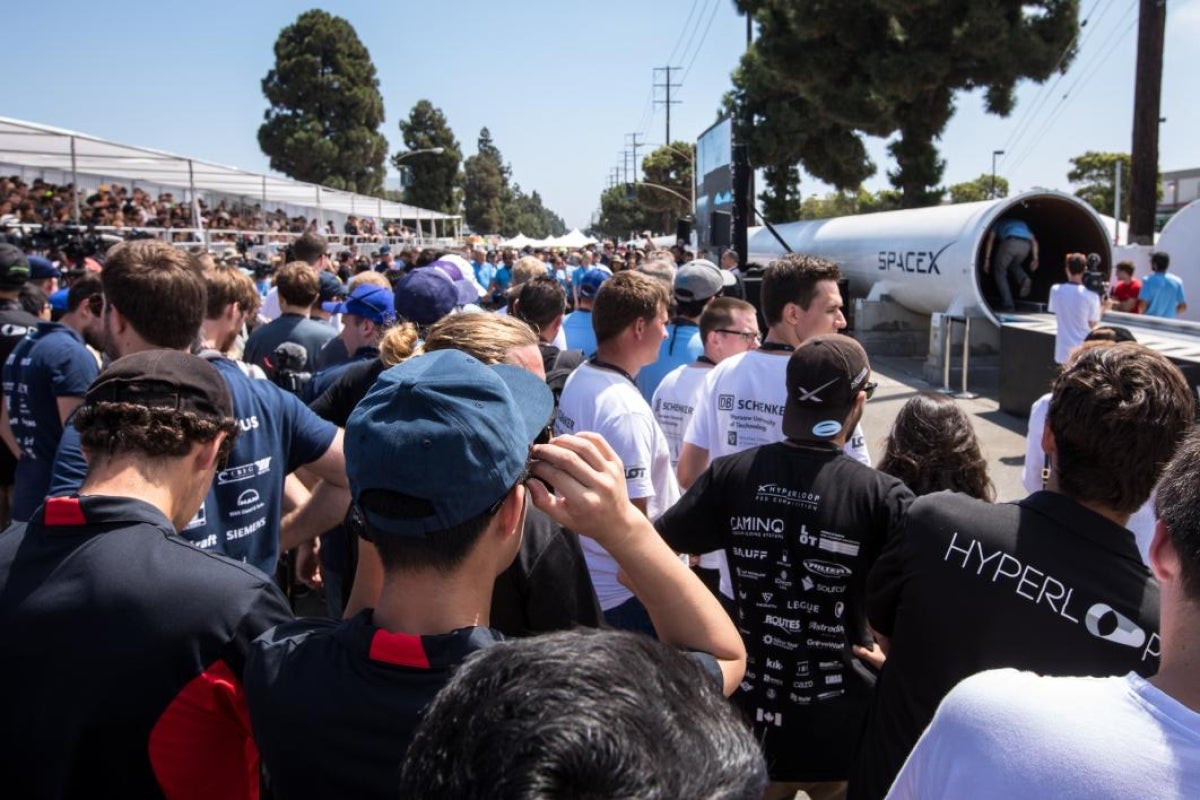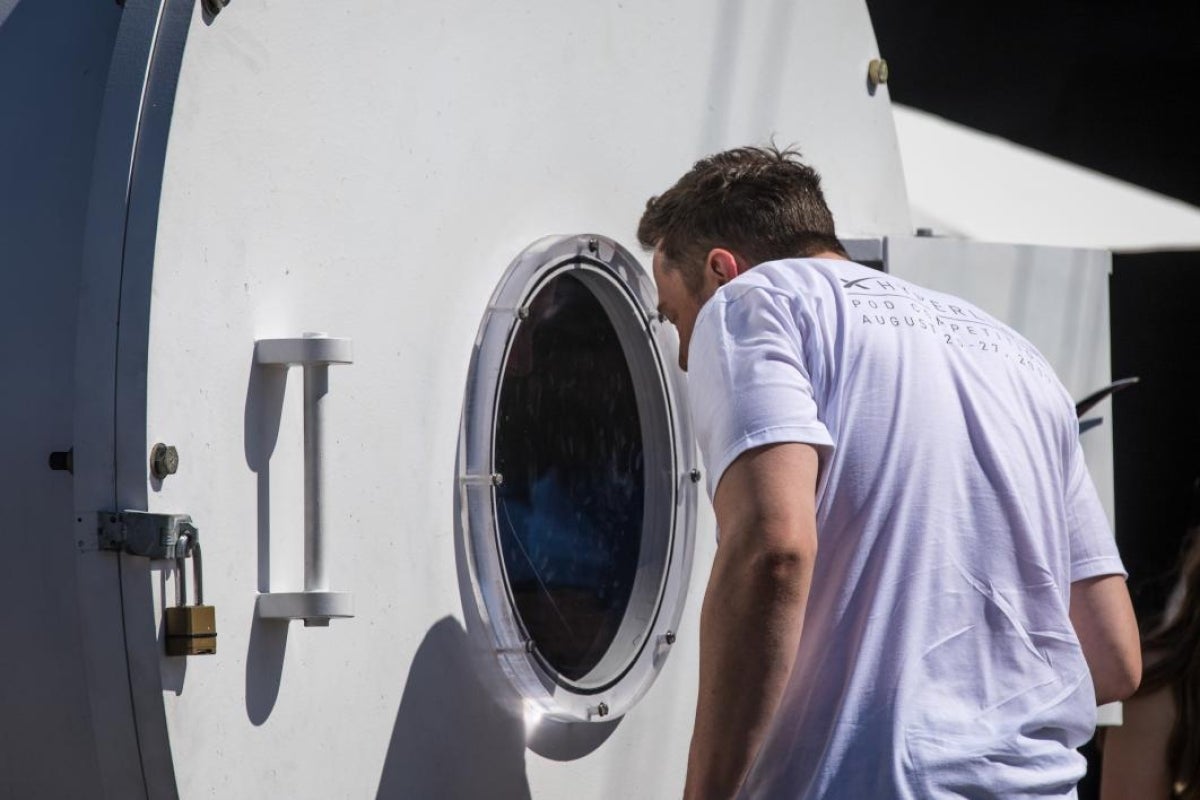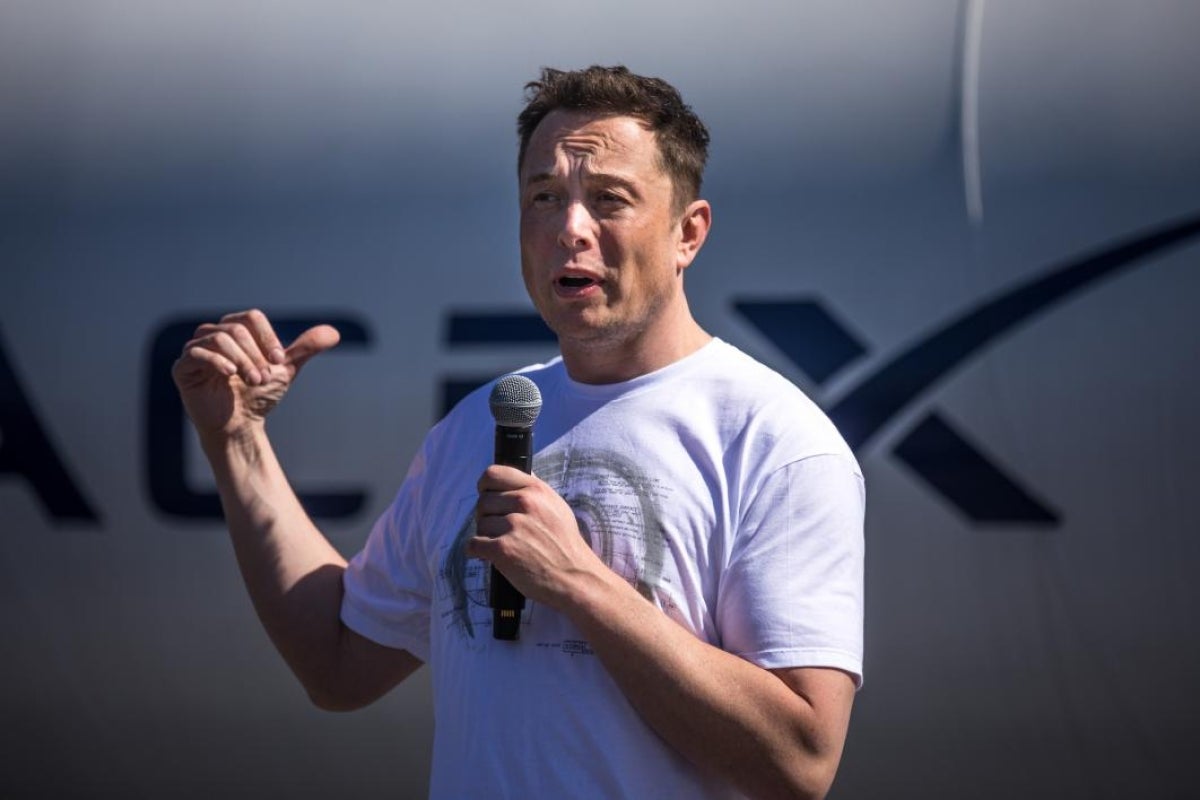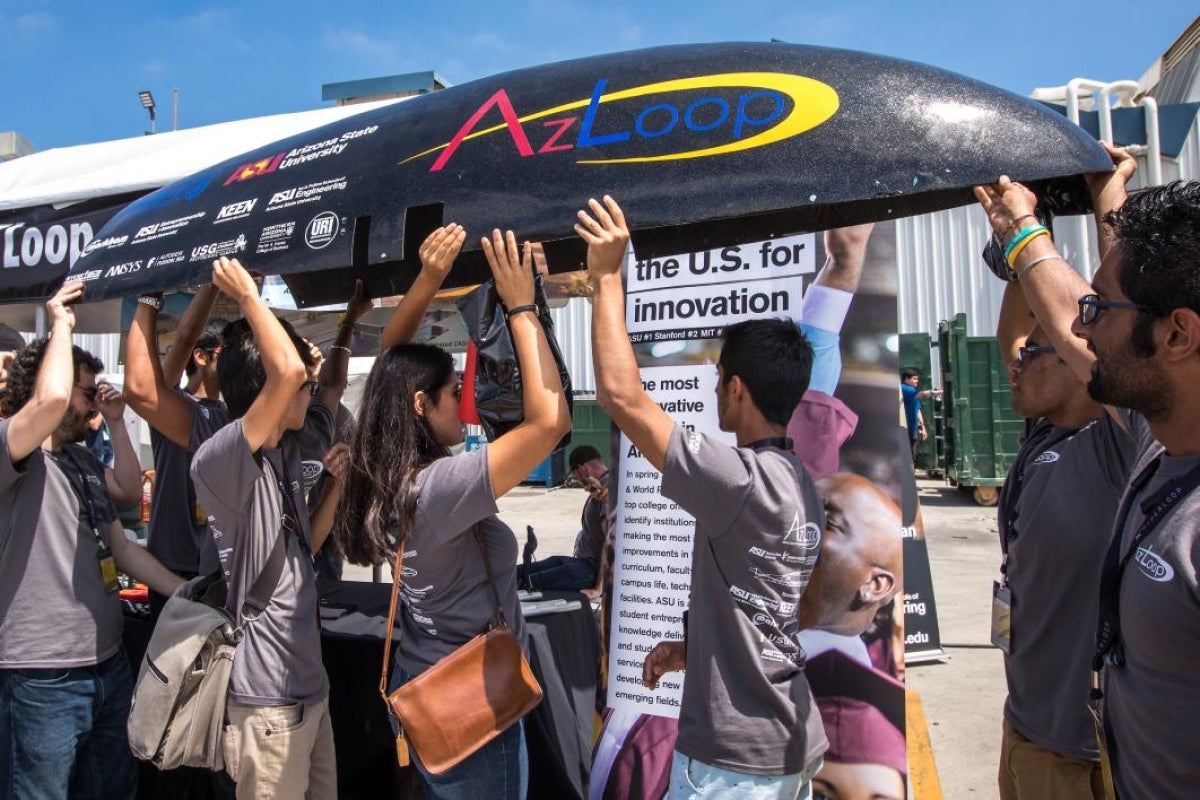Editor's note: This story is being highlighted in ASU Now's year in review. To read more top stories from 2017, click here.
HAWTHORNE, California — AZLoop — a team made up of students from Arizona State University, Embry-Riddle Aeronautical University and Northern Arizona University — finished in the top eight out of 35 teams this weekend at the second hyperloopHyperloop is a new form of proposed mass transit that promises to hit speeds of up to 750 mph. competition sponsored by SpaceX.
The winner was the German WARR team, with a top speed of 201 miles per hour.
“Our team did extremely well while we were here,” AZLoop team co-lead Lynne Nethken said. “We succeeded with flying colors through all of the functional tests. ... The fact that we came in as a new team and we competed neck and neck and came out with the same amount of points as these teams who built last year is pretty incredible.”
The AZLoop team ended up with a total of 88 points, tying with the top teams running at the competition, all of whom had pods in competition last year.
With the knowledge their pod is able to compete at the highest levels, AZLoop is champing at the bit for the next competition
“Our pod is fully functional and ready to go in that tube,” team co-lead Josh Kosar said. “Everything we have to do is tweaking.”
Video by Ken Fagan/ASU Now
ASU designed a nozzle that turns a pressure vessel capable of producing 500 pounds of thrust into one that produces 5,000 pounds of thrust.
“It was actually kind of fun,” Kosar said. “We were aiming at 140 meters per second; this the max speed we can hit and still brake safely. Whereas a lot of the other teams around, the next highest speed we saw was aiming at 90 meters per second.”
Teams from 35 countries came to compete. The bar to bringing home a win was the fact that there was only one vacuum tube for competition, which took 30 to 45 minutes to depressurize and repressurize. Getting pods on and off the track was also time-consuming.
“At the end of the day, when it comes to getting into the hyperloop tube, there are only so many times they can do, especially in a vacuum environment, because it takes time to depressurize and repressurize the track,” Nethken explained.
Kyle Squires, dean of the Ira A. Fulton Schools of Engineering, praised the AZLoop's hard work.
“The team did an unbelievable job — going from essentially a standing start months ago to finishing near the top,” Squires said.
“What they created was indeed an engineering feat, and the passion, energy, drive and commitment put forth by everyone was amazing,” Squires said. “My hope is that this experience empowers and inspires these students and others to continue to push the limits on innovation.”
AZLoop is the only team with a test track and a vacuum chamber, giving them an edge in future. Their workspace and test track are at ASU’s Polytechnic campus.
“If they let us in there, we’d knock their socks off,” said Chris Kmetty, team adviser and an engineer with Markham Contracting, who built the test track. Kmetty is also an alumni, part of the Class of 1997.
“I didn’t see any sad faces,” said Quoc Lam, a ASU senior majoring in mechanical engineering, Barrett honors student and vice president of AZLoop.
“What I got out of it was a lot of experience and team building,” Lam said. “I’ve never worked at this level before.”
A self-described introvert, Lam said he shines in the lab with the team: “It’s the best experience in my life.”
Team members said they’re in excellent shape.
“We have the facilities, we have the pod, we have an amazing team, we have the support of the administration and of Arizona, so we’re really looking forward to being able to pick up again in September for competition 3 and doing this all over again and being one of the teams in the tube next year,” Nethken said.
Bugs were to be expected in testing and competing with a completely new form of technology, Nethken said.
“It’s the fifth mode of transportation, and it’s coming in the future,” she said. “That’s what we’re all doing here. We’re designing this new mode. Hopefully in 10 to 15 years we’ll see a full-scale existence of it, especially in Arizona. ... It’s pretty amazing. Not many students get to work on a new mode of transportation.”
Brendan Trang, an ASU senior in mechanical engineering, said he has never felt more inspired in his life. Being on the SpaceX campus, with rockets and pods on display and Teslas parked everywhere, planes roaring overhead out of the airport, was engineering heaven for Trang.
“I love it,” he said. “I’ve never been more excited about anything in my life. They say your happiest moment is when you get to college. This is it, right here. I’m sad we’re not able to run, but I’m excited to be here and be around these people. I’m excited to see Elon (Musk), if he ever comes out. That’s going to be the best day ever.”
Trang got his wish. Musk made a brief appearance late in the day. Trang had earned his day in the sun. He had stayed up for almost five days in a row, putting components on the chassis after it arrived.
“Honestly the toughest part was trying to stay awake just to get everything done,” he said. “When it finally got sent off, I was so relieved.”
The event was a cross between a street fair — with Ping-Pong and foosball tables, a disc jockey, food trucks and free Hawaiian ice — and an engineering convention, with booths, virtual reality and young engineers discussing actuators, magnets and propulsion.
“We’re going to build a better pod,” Trang said. “We’re going to build the one Elon picks, and we’re going to win next year.”
Top photo by Charlie Leight/ASU Now
More Science and technology

Ancient sea creatures offer fresh insights into cancer
Sponges are among the oldest animals on Earth, dating back at least 600 million years. Comprising thousands of species, some with lifespans of up to 10,000 years, they are a biological enigma.…

When is a tomato more than a tomato? Crow guides class to a wider view of technology
How is a tomato a type of technology?Arizona State University President Michael Crow stood in front of a classroom full of students, holding up a tomato.“This object does not exist in nature,” he…

Student exploring how AI can assist people with vision loss
Partial vision loss can make life challenging for more than 6 million Americans. People with visual disabilities that can’t be remedied with glasses or contacts can sometimes struggle to safely…










